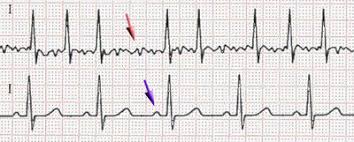
19 Apr AFib: BioSig Technologies PURE EP™ System Improves Intracardiac Signaling During Ablation Procedures

Mr. Londoner
Ken Londoner, MBA
Founder, Chief Executive Officer, Chairman, and Director
BioSig Technologies
MedicalResearch.com: Would you briefly describe the condition of Atrial fibrillation (AFib)?
Whom does AFib primarily affect and how common is it? What are the potential complication of AFib?
Response: Atrial Fibrillation, or Afib—the most common heart rhythm disturbance—affects over 33 million people across the globe. Afib is caused by faulty electrical signals in the upper chambers of the heart (the atria) that cause it to beat too fast or irregularly—often more than 400 beats per minute.* The condition can lead to serious health consequences, including stroke, blood clots, or sudden cardiac arrest. Stroke is among the most serious health concerns for Afib patients, with research suggesting a Afib carries a 5-fold increased risk of stroke— especially when Afib is left untreated.
With a lifetime risk of more than 20 percent*, Afib can affect anyone. However, the condition is most common in those 65 years and older. Individuals with underlying health complications, including heart disease, high blood pressure, thyroid problems, or excessive alcohol use are also at a greater risk of developing Afib.*
 What is the mission of BioSig Technologies? Would you describe the signal acquisition and processing platform? How can PURE EP improve clinical decision-making and workflow during ablation procedures?
What is the mission of BioSig Technologies? Would you describe the signal acquisition and processing platform? How can PURE EP improve clinical decision-making and workflow during ablation procedures?
Response: BioSig is on a mission to empower physicians. The company’s first product, The PURE EP™ System, aims to enhance and support clinical workflow and decision-making during a catheter ablation—the minimally invasive procedure that treats Afib and other types of irregular heart rhythm conditions.
PURE EP™ is an advanced signal processing platform that reveals the full range of intracardiac signals with high-fidelity for real-time analysis during a procedure. By increasing the diagnostic value of cardiac signal data, PURE EP™ aims to address the limitations of existing EP technologies and empower physicians with the most reliable cardiac signal information.
To date, 75 physicians have completed more than 2,200 patient cases with the PURE EP™ System.
MedicalResearch.com: Is it compatible with currently available systems?
Response: PURE EP™ integrates with existing electrophysiology (EP) labs and workflows. The system is fully compatible with and complementary to other EP capital equipment, including recording systems, mapping systems, robotic and multi-display panels.
MedicalResearch.com: Is there anything else you would like to add?
Response: In April 2021, BioSig announced the results of PURE EP 2.0, a multicenter, blind and randomized clinical trial conducted across three of the nation’s top medical centers.
Results showed a 93% consensus rating, including a 75% improvement in signal quality and an 83% increase in confidence in signal interpretation, and were published in the Journal of Cardiac Electrophysiology in a report titled: “Evaluation of a novel cardiac signal processing system for electrophysiology procedures: the PURE EP 2.0 study.”
More recently, BioSig announced the upcoming release of PURE EP NOVA-5 Software. Developed to meet the needs and of its physician users, PURE EP NOVA-5 Software delivers a new standard in signal processing, offering greater customization and smarter workflows
Sources:
- https://www.cedars-sinai.org/health-library/diseases-and-conditions/a/atrial-fibrillation.html
- https://www.ncbi.nlm.nih.gov/pmc/articles/PMC6694766/
- https://www.nytimes.com/2021/07/26/well/live/afib-warning-signs.html#:~:text=Atrial%20Fibrillation%2C%20A%20Common%20Heart,Miss%20%2D%20The%20New%20York%20Times
[wysija_form id=”3″]
[last-modified]
The information on MedicalResearch.com is provided for educational purposes only, and is in no way intended to diagnose, cure, or treat any medical or other condition. Always seek the advice of your physician or other qualified health and ask your doctor any questions you may have regarding a medical condition. Some links may be sponsored and no links are warranted or endorsed by MedicalResearch.com or its parent company, Eminent Domains Inc. In addition to all other limitations and disclaimers in this agreement, service provider and its third party providers disclaim any liability or loss in connection with the content provided on this website.
Last Updated on April 19, 2022 by Marie Benz MD FAAD
